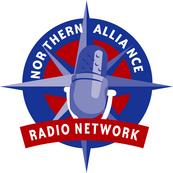
« Could Ahmadinejad Be In Serious Trouble? | Main | Turkmenbashi Shuffles Off »
When the topic of farm subsidies arises, it evokes an image of a subsistence small operator, barely keeping up with the bills, while employing and supporting a large family. Politicians from my region of the country sell this narrative when funding massive subsidy programs for agriculture, telling voters across the country that the federal government has to secure the food supply by supporting price structures to keep the small farmer from bankruptcy. However, as the Washington Post reports, this portrait of the American farmer has more in common with Norman Rockwell than modern-day agriculture -- and these very subsidies are the reason:
Today, most of the nation's food is produced by modern family farms that are large operations using state-of-the-art computers, marketing consultants and technologies that cut labor, time and costs. The owners are frequently college graduates who are as comfortable with a spreadsheet as with a tractor. They cover more acres and produce more crops with fewer workers than ever before.The very policies touted by Congress as a way to save small family farms are instead helping to accelerate their demise, economists, analysts and farmers say. That's because owners of large farms receive the largest share of government subsidies. They often use the money to acquire more land, pushing aside small and medium-size farms as well as young farmers starting out.
"Historically, when you think of family farms, you think of mom and dad and three generations working a small or mid-sized farm. It gives you a warm and fuzzy feeling," said Alex White, a professor of agricultural economics at Virginia Tech. "In the real world, it might be a mid-sized farm. But it also might be a huge farm. It might be a corporation."
Large family farms, defined as those with revenue of more than $250,000, account for nearly 60 percent of all agricultural production but just 7 percent of all farms. They receive more than 54 percent of government subsidies. And their share of federal payments is growing -- more than doubling over the past decade for the biggest farms.
These programs appear more like land bonuses than subsidies for struggling farmers. The more one produces, the more subsidies they earn. The Post tells the tale of an Illinois farmer who grossed almost a half-million dollars in soybean production, and got $120,000 in subsidy checks from the feds, which he called "embarrassing". Meanwhile, a farmer in Iowa with one-third the land received much lower subsidy checks, even though one would think that the smaller farms need the subsidies more.
Last year, the total amount of agricultural subsidies was $15 billion. The largest farms -- those grossing $500,000 or more in production -- accounted for over 30% of all subsidy payments. As noted above, when one adds in the farms that produce more than $250,000, the group gets more than 54% of all farm subsidies even though they comprise only 7 percent of all farms. Even that number is misleading, however, as the government counts "hobby farms" in the mix, adding more than a million sites that produce as little as $1,000 a year.
In fact, the number of actual family farms has steadily decreased over the last couple of decades. Looking at the subsidy payments, it isn't difficult to see why. The incentives have all been weighted to land ownership, and so the subsidies get reinvesting in purchasing more land for bigger production. Small farms get squeezed out by their poor position in the real-estate and agricultural markets, thanks to the distortion provided by the federal subsidies. Since 1989, the portion of subsidies paid to the largest farms has skyrocketed from 13% to 32%, providing plenty of resources for the consolidation of farms into larger corporate entities.
And do these larger farms employ more people? Not at all -- they actually reduce the amount of farm jobs available. Since the subsidies have touched off a real-estate brushfire, the farms have to improve efficiency in order to free up funds for land acquisition. That means more automation, more technological improvements, and therefore fewer hands required to get crops to market.
Even the farmers wonder why the government feels that they need special assistance. The subsidy programs have seriously distorted the agricultural and land markets and actively undermines the very people they claim to save from economic disaster. It's time to rethink government involvement in agriculture and allow the market forces to work properly.
Sphere ItTrackback Pings
TrackBack URL for this entry is
Listed below are links to weblogs that reference Subsidizing The Elimination Of The Small Farmer:
» A Subsidy By Any Other Name Would Be Called Welfare from Residual Forces
Via ‘Fresca’ Ed.
Last year, the total amount of agricultural subsidies was $15 billion. The largest farms — those grossing $500,000 or more in production — accounted for over 30% of all subsidy payments. As noted above, when one... [Read More]
Tracked on December 21, 2006 6:22 AM

captain*at*captainsquartersblog.com


My Other Blog!
E-Mail/Comment/Trackback Policy
Comment Moderation Policy - Please Read!
Skin The Site








Hugh Hewitt
Captain's Quarters
Fraters Libertas
Lileks
Power Line
SCSU Scholars
Shot In The Dark
Northern Alliance Radio Network
Northern Alliance Live Streaming!



Des Moines Register
International Herald Tribune
The Weekly Standard
Drudge Report
Reason
The New Republic
AP News (Yahoo! Headlines)
Washington Post
Guardian Unlimited (UK)
New York Times
Los Angeles Times
OpinionJournal
Pioneer Press
Minneapolis Star-Tribune
MS-NBC
Fox News
CNN

Design & Skinning by:
m2 web studios
blog advertising

- dave on Another National Health Care System Horror Story
- brooklyn on Hillary Not Hsu Happy
- rbj on Hillary Not Hsu Happy
- Robin S on Requiem For A Betrayed Hero
- Ken on Hillary Not Hsu Happy
- Robin S. on Requiem For A Betrayed Hero
- RBMN on Hillary Not Hsu Happy
- NoDonkey on Another National Health Care System Horror Story
- Robin Munn on Fred Thompson Interview Transcript
- filistro on When Exactly Did Art Die?










